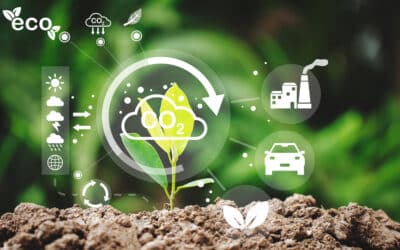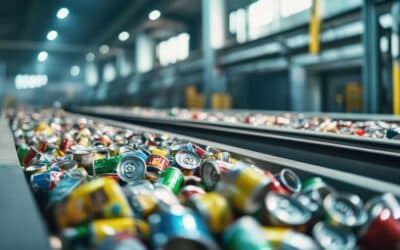“Organizations must establish procedures to identify the aspects of their business that make an impact on the environment…[then] work to develop a plan to manage the significant environmental impacts they have defined…By identifying the key environmental aspects with the highest level of potential impact at the very beginning of the process, organizations are able to utilize their EMS to improve…” – What is ISO 14001
The process approach that defines ISO – regardless of the standard being pursued – has applications that can be applied to every aspect of our daily living. Beyond our businesses, themes of environmental awareness and sustainability can be positively impactful irrespective of where they are implemented.
It’s not easy to overlook the obvious signs of climate change, and the research predicting its impacts over the next 50 years looks daunting. The companies we work for are adopting the principles and practices of ISO 14001 to improve their carbon footprint and create more sustainable business. If we employ those same concepts in our personal lives, we can also minimize the effects of our living on the globe.
It can be hard to think that any changes we make personally would have a direct impact on such a massive issue. It’s important to remember that small steps, when taken consistently, collectively, and in succession, have the potential to create massive change.
So, where do we start? By following the exact same procedure that companies follow to achieve compliance to the ISO 14001 requirements, we can find ways to improve.
Conduct an Environmental Survey
It starts by evaluating the processes and aspects in our lives that have the potential to make an impact. From the cars we drive to our recycling practices, there are very few aspects of our lives that don’t make an impact on our surrounding environment.
Sit down with your family and take stock of your day-to-day lifestyle and activities. Make a list of all the ways you impact the environment, focusing on waste, pollution, and use of natural resources. Don’t just think about global issues you’re contributing to – think about your neighborhood, town, and region, and the ways that you might be creating a negative impact to your immediate area.
Direct and Indirect Impacts
As you think of the environmental aspects of your living, be sure to evaluate both direct and indirect practices. Of course, there are things you are doing that will directly affect the planet, like your recycling habits and the car you drive – but what about your indirect impacts? Think about the chain of events of your actions and the environmental results at the end of that chain.
Determine Impact and Severity
Once your list is complete, you’ll need to evaluate the severity of the impact of each aspect. We know that our consumption of packaged products creates waste – are you handling that waste in an environmentally friendly way? How much are you tossing each week?
Examine each aspect individually. Be honest with yourself about the potential harm you’re causing, and put your biggest infractions at the top of your list.
Once you have the severity listed, categorize each aspect by ease of correction. You might find that there are some major issues you’re contributing to that, through a few simple adjustments, you could minimize. You’ll also find “big project” corrections that will need to become a priority in order for you to be a better environmental steward.
Create Plans for Improvement
You now have a (probably huge) list of environmental aspects of your lifestyle categorized by severity and ease of correction. It’s finally time to create your improvement plans.
The idea of ISO 14001 is not to correct everything all at once – it’s to address the most severe issues and quick wins before moving forward in an effort of continuous improvement.
Start with the quick wins – these are simple adjustments you can make to minimize your environmental impact. Maybe it’s turning the water off while you brush your teeth or choosing to use reusable water bottles instead of plastic or foregoing the plastic straw in your drink at a restaurant – it’s the simple, near-effortless changes you can make.
Then identify one or two big projects to tackle first. Perhaps your family needs to overhaul your waste management practices. You can start by recycling and composting to reduce the trash you’re sending to the landfill each week, and by paying closer attention to the way the food and other products you purchase are packaged.
Focus your projects on improving waste management, prevention pollution, and conserving natural resources. As you work toward (and achieve!) improvement on each aspect, you can move forward into new improvement plans.
And once you’ve conquered your list, don’t assume you’re done! Start back at the beginning, evaluation your aspects, determining their severity, and making plans to improve them.
Continuous improvement is the over-arching theme of any ISO standard. When we take those principles into our practices surrounding our responsibly to sustainable living and care for the environment, we’re contributing to the creation of a culture that cares for the future of the world.
For information on the ISO environmental management system, ISO 14001, visit the ISO 14001 page.



